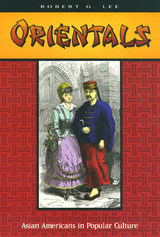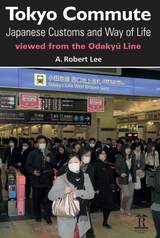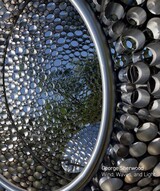2 books about Lee, Robert

Orientals
Robert Lee
Temple University Press, 1999
Sooner or later every Asian American must deal with the question "Where do you come from?" It is probably the most familiar if least aggressive form of racism. It is a tip-off to the persistent notion that people of Asian ancestry are not real Americans, that "Orientals" never really stop being loyal to their foreign homeland, no matter how long they or their families have been in this country. Confronting the cultural stereotypes that have been attached to Asian Americans over the last 150 years, Robert G. Lee seizes the label "Oriental" and asks where it came from.
The idea of Asians as mysterious strangers who could not be assimilated into the cultural mainstream was percolating to the surface of American popular culture in the mid-nineteenth century, when Chinese immigrant laborers began to arrive in this country in large numbers. Lee shows how the bewildering array of racialized images first proffered by music hall songsters and social commentators have evolved and become generalized to all Asian Americans, coalescing in particular stereotypes. Whether represented as Pollutant, Coolie, Deviant, Yellow Peril, Model Minority, or Gook, the Oriental is portrayed as alien and a threat to the American family -- the nation writ small.
Refusing to balance positive and negative stereotypes, Lee connects these stereotypes to particular historical moments, each marked by shifting class relations and cultural crises. Seen as products of history and racial politics, the images that have prevailed in songs, fiction, films, and nonfiction polemics are contradictory and complex. Lee probes into clashing images of Asians as (for instance) seductively exotic or devious despoilers of (white) racial purity, admirably industrious or an insidious threat to native laborers. When Lee dissects the ridiculous, villainous, or pathetic characters that amused or alarmed the American public, he finds nothing generated by the real Asian American experience; whether they come from the Gold Rush camps or Hollywood films or the cover of Newsweek, these inhuman images are manufactured to play out America's racial myths.
Orientals comes to grips with the ways that racial stereotypes come into being and serve the purposes of the dominant culture.
The idea of Asians as mysterious strangers who could not be assimilated into the cultural mainstream was percolating to the surface of American popular culture in the mid-nineteenth century, when Chinese immigrant laborers began to arrive in this country in large numbers. Lee shows how the bewildering array of racialized images first proffered by music hall songsters and social commentators have evolved and become generalized to all Asian Americans, coalescing in particular stereotypes. Whether represented as Pollutant, Coolie, Deviant, Yellow Peril, Model Minority, or Gook, the Oriental is portrayed as alien and a threat to the American family -- the nation writ small.
Refusing to balance positive and negative stereotypes, Lee connects these stereotypes to particular historical moments, each marked by shifting class relations and cultural crises. Seen as products of history and racial politics, the images that have prevailed in songs, fiction, films, and nonfiction polemics are contradictory and complex. Lee probes into clashing images of Asians as (for instance) seductively exotic or devious despoilers of (white) racial purity, admirably industrious or an insidious threat to native laborers. When Lee dissects the ridiculous, villainous, or pathetic characters that amused or alarmed the American public, he finds nothing generated by the real Asian American experience; whether they come from the Gold Rush camps or Hollywood films or the cover of Newsweek, these inhuman images are manufactured to play out America's racial myths.
Orientals comes to grips with the ways that racial stereotypes come into being and serve the purposes of the dominant culture.
[more]

Tokyo Commute
Japanese Customs and Way of Life Viewed from the Odakyu Line
Robert Lee
Amsterdam University Press, 2011
A unique take on modern life in Japan’s capital city. A Japan of trains, every day to and fro, carriage scenes and theatre, vistas from the window, advertising posters. Each to be savoured through a specific Tokyo line – the Odakyu. Pitched as creative text and line-graphics, Tokyo Commute: Japanese Customs and Way of Life Viewed from the Odakyu Line offers on-track and off-track observations. A gallery of mirrors, musings, memories. This is less documentary than iconography, a poetics of Japanese routine and etiquette. It offers a wry diary of month-and-weekday observations, a ‘map’ of Shinjuku as key station and gathering-place, a run of notable Tokyo locations – from the National bunraku theatre to a Kawasaki sludge recycling centre. Other Odakyu travel involves the Hakone open air art gallery, Narita as both airport and temple complex, Yokohama as history and Chinatown. Essential reading for first-time, and second-time visitors, and even regular commuters.
[more]
READERS
Browse our collection.
PUBLISHERS
See BiblioVault's publisher services.
STUDENT SERVICES
Files for college accessibility offices.
UChicago Accessibility Resources
home | accessibility | search | about | contact us
BiblioVault ® 2001 - 2024
The University of Chicago Press









